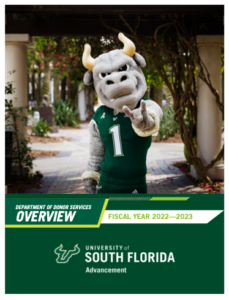Explaining Your Work
There’s a lot of people who don’t really understand what it is that educational advancement professionals do. And this doesn’t just apply to people who work outside of the field. It can also be the case within advancement shops, when staff in one department don’t fully appreciate what those in other departments do. Whether it’s in a small shop, in a large program, or somewhere in between, it’s important for different units to understand one another if they’re going to be able to work together effectively.

A lack of clarity about the people, structures, roles, goals, processes, and the challenges that individual units face can create inefficiency, confusion or even mistrust. Jargon can play a role too. Using different terminologies and acronyms can create mirco-cultures and make it difficult to communicate. This can impact morale and productivity. That’s why it’s important to take time now and then to explain your work.
The Donor Services Department at the University of South Florida Foundation appreciates the need for units to be understood as a way to improve collaboration. That’s why they developed a “Donor Services Manual”. This full-color 28 page document provides an overview of the Donor Relations Team, including pictures and contact information for individual staff. It contains a summary of the department’s core values, guiding principles and goals for the year. It also describes the basic function and processes of the donor relations programs and includes visual examples of their work and infographics to highlight important datapoints.
The piece was shared internally as a way to help other advancement units better understand their work as well as externally to help volunteers and donors see and appreciate the people who serve and support them everyday.
Dominika McLean, Assistant Director, Donor Relations & Stewardship at USF Foundation explains, “We tailored the manual to serve as a clear, accessible, and strategic resource—highlighting our team’s achievements, metrics, and goals in a visually engaging, easy-to-navigate format. It was a true labor of love that reflects the comprehensive efforts of our entire unit.”
The manual helped to increase awareness both inside and out. McLean says, “Positive feedback from others (including advancement leadership) led to increased collaboration. We were also pleasantly surprised by how many colleagues at peer institutions outside of USF heard about the manual and found it inspiring and useful for their own work.”
Want to learn more? Check out the complete sample along with hundreds of others in AGN’s Sample Library which is available free to all AGN Members.
AGN Members receive unlimited access to our resources, discounts, and other benefits. Click here to learn more.
Want to stay up-to-date on best practices in annual giving? Click here to follow AGN's Page on Linkedin!
- S Prev
- s
